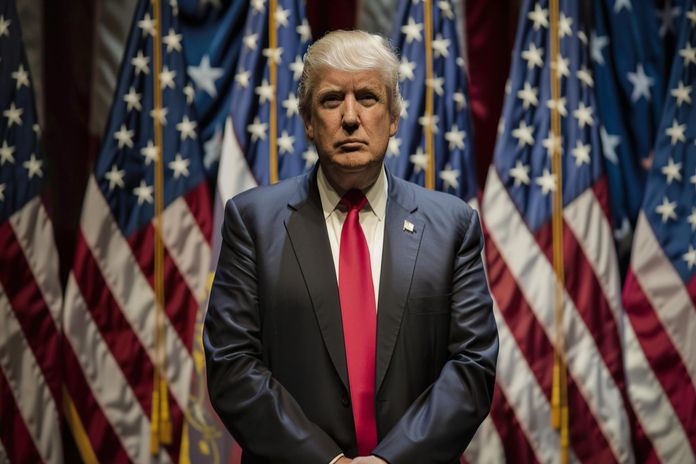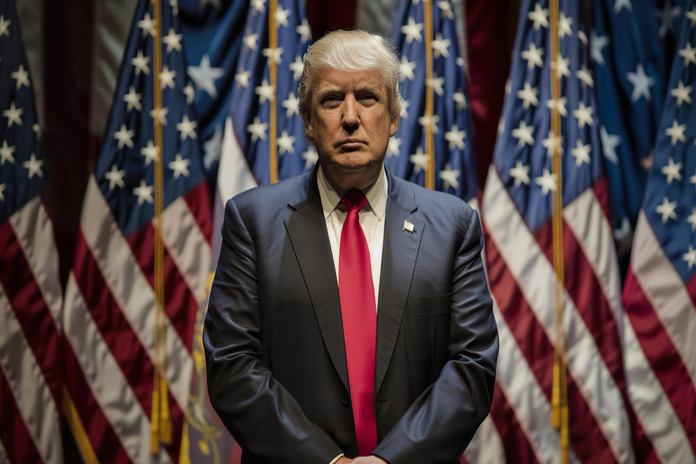
Trump Stablecoin Powers $2B Binance Investment

A new wave of controversy is sweeping through the crypto world with the rise of the Trump stablecoin, USD1. Launched by Donald Trump’s crypto venture, World Liberty Financial, the stablecoin has now become a central piece in a massive $2 billion investment from Abu Dhabi-based MGX into crypto exchange giant Binance (unlisted). The move has ignited political backlash and raised questions over ethics, influence, and the future of regulation in digital finance.
What Is the Trump Stablecoin?
World Liberty Financial unveiled USD1 in March as a dollar-pegged stablecoin backed by U.S. Treasuries, dollars, and other cash equivalents. According to co-founder Zach Witkoff, USD1 is designed to provide financial access without traditional intermediaries like banks. Witkoff announced at a Dubai crypto conference that MGX chose USD1 to facilitate its $2 billion transaction with Binance, the world’s largest crypto exchange by trading volume.
The stablecoin, issued on Binance’s blockchain, has seen its circulation value soar to $2.1 billion, per CoinMarketCap. An anonymous wallet holding nearly all of that amount received the funds over a two-week span in April. Though the identity of the wallet’s owner is unknown, the transaction cements USD1’s role in a high-stakes international investment deal.
Political Firestorm Over Trump-Linked Crypto
The Trump stablecoin’s involvement in global finance has triggered fierce political scrutiny. Democratic Senator Elizabeth Warren criticized the MGX-Binance deal, warning that it exemplifies how Trump-linked financial ventures could exploit upcoming legislation. “This is corruption,” Warren said, referencing the so-called “GENIUS” Act that would regulate stablecoins. She argued that the bill could enable self-dealing by the President and his family, especially given Trump’s declared ambitions to overhaul U.S. crypto rules if re-elected.
Despite the backlash, World Liberty Financial has not commented, and neither has the White House. Still, Trump’s crypto strategy is gaining traction, especially among international investors like Justin Sun, the Hong Kong-based crypto entrepreneur behind the TRON blockchain. Sun, who has poured at least $75 million into World Liberty and serves as an adviser, moderated the Dubai panel featuring Witkoff and Eric Trump.
Trump, Binance, and High-Profile Partnerships
While USD1’s adoption is a big win for World Liberty, it also signals a new phase in Binance’s recovery after regulatory fallout. Former Binance CEO Changpeng Zhao pleaded guilty last year to violating U.S. anti-money laundering laws and stepped down as part of a $4.3 billion settlement with the U.S. government. Yet Zhao, still a major Binance shareholder, was seen in Abu Dhabi meeting with Witkoff and other Trump-linked executives.
Their public reunion suggests a strong alliance, despite Binance’s legal history and the scrutiny surrounding Trump’s crypto initiatives. The photo-op serves as a signal that big crypto players—old and new—are willing to partner with politically controversial figures if it leads to significant capital inflow.
Tron Integration Expands Stablecoin Reach
Beyond Binance, USD1 is also expanding onto TRON, a blockchain widely used for payments and known for low fees. This strategic integration could further boost USD1’s utility in global crypto trading. The Trump stablecoin’s rapid rise, however, isn’t without risk—especially with the SEC’s previously filed securities fraud suit against Sun and growing regulatory uncertainty in the U.S.
What’s Next for the Trump Stablecoin?
The explosive growth of USD1 underscores the increasing role of stablecoins in global finance—but also the risks of political entanglement. With Trump back in the White House and pledging to reshape crypto policy, his family’s ventures will likely remain under a microscope. Whether USD1 becomes a legitimate tool for financial access or a magnet for controversy may depend more on Washington than on Wall Street or Abu Dhabi.
For now, though, the Trump stablecoin has secured a place in one of the largest crypto deals of the year—and possibly the future of decentralized finance.
Featured Image: Freepik